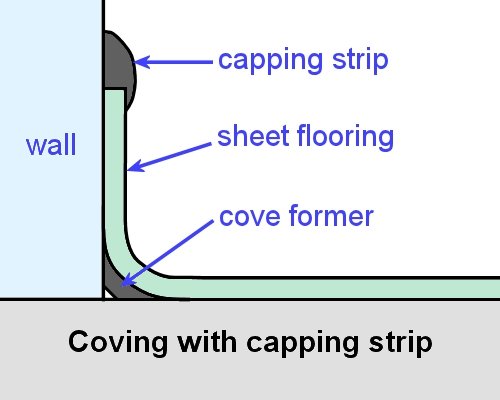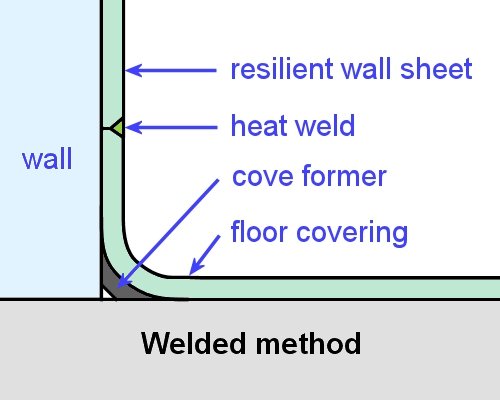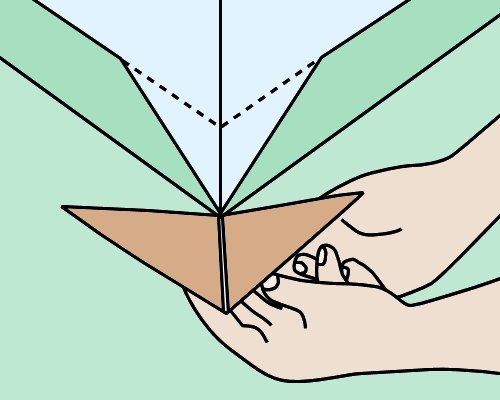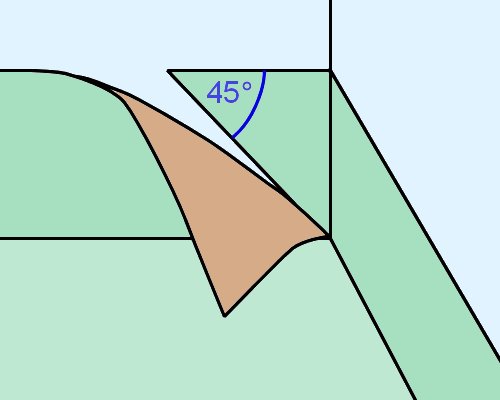Coving field material
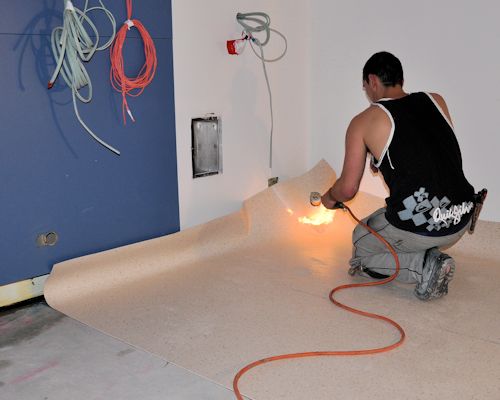 Audio for slide 1 (mp3 |6|KB)
Audio for slide 1 (mp3 |6|KB)
When it's installed in a wet area, such as a shower or bathroom, the coving height must be at least 150 mm.
Depending on the radius of the curve at the base, a heat gun may be used to make the floor covering more flexible, particularly at corners.

 Audio for slide 5 (mp3 |6|KB)
Audio for slide 5 (mp3 |6|KB)
Internal and external 'butterfly' corners
AS 1884 does not permit vertical welds in the corners of coved sheets in wet areas.
This is because the weld could become a weak point if there is any movement in the substrate, which would reduce the corner's water resistance.
Instead, the joints must be cut at 45 degrees to the corner.

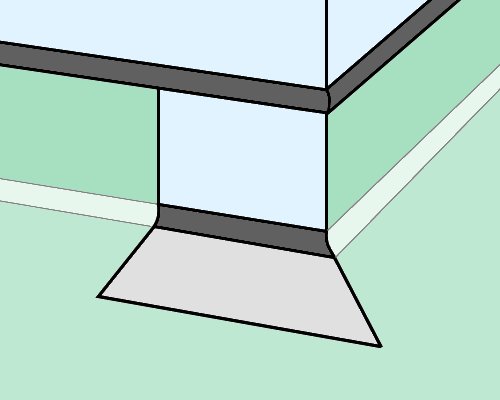 Audio for slide 8 (mp3 |6|KB)
Audio for slide 8 (mp3 |6|KB)
Mitred corners using a 'make-out' piece
In areas where water resistance is not a priority, it's possible to mitre the corners with the aid of a separate make-out piece.
However, the end result is a corner with a vertical join, so you must make sure that it will be acceptable in the project you're working on before you decide to finish the corner in this way.


Learning activity
Audio 9 (mp3 |6|KB)In the last lesson we looked at the following video clip produced by Quantum Flooring Solutions:
How to fit the Quantum Floormitre Cap and Cove System
Watch the clip again, and this time make a note of all the hand tools used by the installer to fit, trim and weld the vinyl flooring. List these tools.






